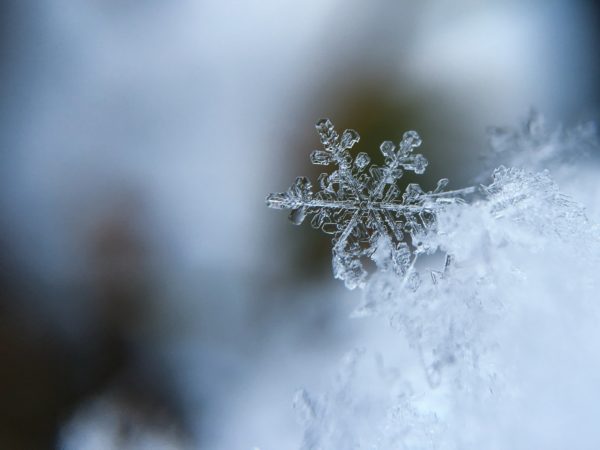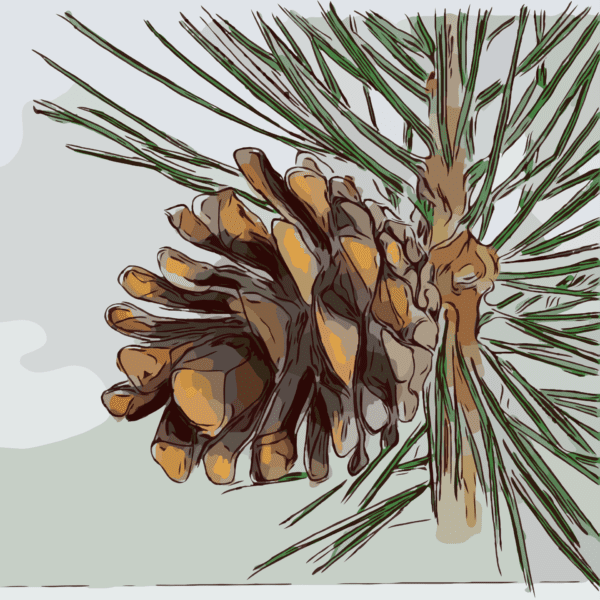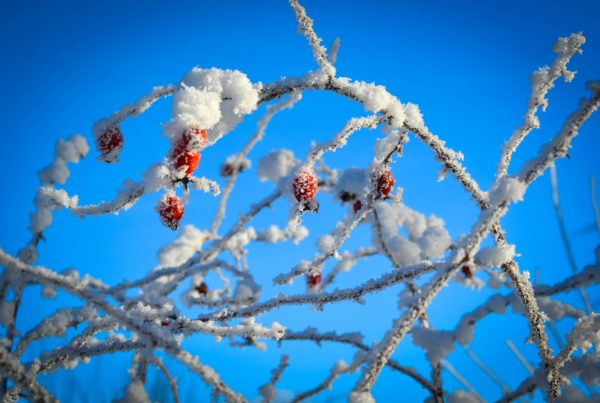For those of us who struggle to embrace winter, we are not alone. When you think about it, as a culture the majority of Canadians spend 8 months out of the year complaining about the cold as a part of daily conversation.
Though we can all agree hating winter is part of daily banter deep-rooted in our culture, across the big pond we can easily find more positive attitudes during these dark times.
Wintertime well-being
By now, we are all looking for ways to cope with the long haul of being confined and wearing masks. While we watch from afar the romanticizing of winter with Danish hygge classrooms, Scandanavian friluftsliv and UK outdoor learning, as they sparkle with magic and peacefulness during these stressful times.
Recently I heard the Dutch term uitwaaien which is difficult to translate directly. The idea is to walk in nature (or a park), especially in Winter, and let the wind clear your thoughts. Hearing about this practice seems well-timed as we hit the mid-winter mark, when taking care of mental health is central.
 If you are having trouble getting yourself and the younger ones in your life out the door in these freezing temperatures, hold tight as research shows there is a way to get you excited about these cold days. When we take the time to more closely consider the ‘wintertime well-being‘ of ourselves and those around us, we have to also consider working towards “helping people change their attitudes toward winter.”(Lowe, 2019)
If you are having trouble getting yourself and the younger ones in your life out the door in these freezing temperatures, hold tight as research shows there is a way to get you excited about these cold days. When we take the time to more closely consider the ‘wintertime well-being‘ of ourselves and those around us, we have to also consider working towards “helping people change their attitudes toward winter.”(Lowe, 2019)
So how does one ascribe to the popular advice to take ourselves and our class outside, for some fresh air, away from masks and indoor air quality?
Wintertime mindset scale
When Dr. Kari Leibowitz, from Stanford University’s Mind and Body lab, began her research, she looked towards a community with a well-established “positive wintertime mindset“. She began to “assess people’s beliefs about the winter” to test “how you feel and what you like doing” on a “wintertime mindset scale”. Her takeaway, after researching the Norwegian city of Tromsø, 200 miles north of the Arctic circle, is to follow the basic rule of “get outside as much as possible” to beat that feeling of “being stuck inside” instead of saying it is “too cold, too dark, too snowy, too wet.” She discovered in this part of the world there are people who look forward to this time of year, and her takeaway was to “find something you love to do in the winter, and really lean into that and savor it”. She concludes “Notice how leaning into winter makes it feel completely different from fighting against.” (Lowe,2019; Leibowitz, 2021)
Plants and animals don’t fight the winter; they don’t pretend it’s not happening and attempt to carry on the same lives that they lived in the summer. They prepare. They adapt … Once we stop wishing it were summer, winter can be a glorious season in which the world takes on a sparse beauty and even the pavements sparkle.
-Katherine May, Wintering
Of course, this is easier said than done. Who doesn’t want to hide when we check the record-breaking temperatures recorded this winter? If we close our eyes and romanticize the wind blowing and surrounding ourselves with nature, we can almost believe that when we walk in the great outdoors we are giving ourselves an opportunity to refresh. Consider how the benefits of these moments are crucial these days.
Dr. Kari Leibowitz concludes “a growing body of research in psychology suggests that it’s possible to intentionally change our mind-set, and that doing so can improve our health, performance and well-being.” She emphasizes that “when you bundle up, dress appropriately, and go outside, it is not as bad as you think. You can feel vital, maybe tougher than you think, handle more than you think” and ultimately you “feel peace and accomplishment from being out in bad weather” which is a “really sound strategy for winter wellbeing.” (Cooper, 2020)

Resilience
Pamela Gibson, an outdoor education specialist from Learning for a Sustainable Future has been bringing students outdoors for decades. She began her recent talk Outdoor Learning in Winter with LEARN in agreement that we have to move away from the type of thinking that she calls the ‘good-weather-only-outside mentality’. This mentality prevents kids and adults from experiencing all types of weather. She explains the importance of acknowledging here in Canada that: “We are Northern people. Our mental health demands that we get outside and we connect to our out-of-doors.”
When Pamela flips to her slide with the phrase “slow release-build up resilience” she explains with this example, “If I were to take a class outside for the first time that had not been outside for learning, I would basically take them outside the door and talk for 5 minutes with them about something they can see and relate to, and then take them back in…and just keep increasing that time.” She advises to “increase it incrementally as they acclimatize. That’s what creates resilience instead of resistance.”
We often marvel at the natural world’s capacity to withstand so much and remain so steady and beautiful. What if we reminded ourselves we’re very much a part of that natural world and very much capable of that exact same magic?
-Jessica Adams, Nature Nerding
She continues, “When we talk about character building…there are a few characteristics that we would love to instill in our kids and we can do that really well outside…there are lots of challenges to be had in winter, something as simple as balancing on a log…Those walks in the deep snow are not easy” but it builds character.
Self-Reliance
During our recent Winter Wonderland session, Sylvie Ozell, a teacher from Forest Hill Junior, concurred that being outdoors is “good for us, [both] teacher and kids, as it slows anxiety.” Though she does acknowledge “wintertime for some of [us], maybe it’s scary to be outside during this cold weather” which she follows with the tried and true expression: “There is no bad weather but only bad clothing.”

Kelly Fahey, who also presented at the recent Winter Wonderland session, takes her students out regularly at Morin Heights Elementary School. The positive effects of taking the kids outdoors, for Kelly, is heartening. “I certainly feel so much better when I get outside with the students and especially during these times when we’re tired of wearing, you know, our masks all day.” She recognizes that with her students’ “stronger connections to nature” comes “improved mental health, physical health, and wellness” along with “enhanced cooperation and problem-solving…reduced challenging behaviors. I feel that once we get the kids out moving we have fewer issues.” With her grade 6 class, Kelly has focused on “creating that mindset for the students and having that routine so they know the minute they see me haul out my bucket –we are headed outside”. She sees that her students “really enjoy being outside and learning” no matter the temperature.
What’s in the bucket?
– First aid kit
– Sit-upons winter sit and stand provides insulation so feet stay warmer longer
– Magnifying glasses
– Blind folds
– Measuring tapes, rulers
– Index cards, pencils
– Small white board, marker
– String
– Tarp
– Garbage bag
Another of her approaches is to send home a list “to let parents know what items the students would need to be wearing in order to be nice and warm.”
Here is the list she sends home to parents:
– Insulated, waterproof boots
– Wool socks, silk/synthetic liners a plus -NO COTTON
– Base layer: wool, silk, or polypropylene long underwear top and bottom
– Mild layer: long-sleeve wool or fleece sweater and fleece pants
– Over layer: Insulated waterproof jacket with hood and insulated waterproof snow pants
– Mitts preferred
– Gloves: Waterproof, insulated liners a plus
– Fleece or wool hat
After much practice, Kelly’s students have come to know what to expect, as “when they’re in class with me, they know that they have to dress…I always explain to the students that if we’re all comfortable, then we can stay out longer, and have more fun.” To reinforce this learning, the students were all asked “to research on the best way to dress” for the weather and then present it to the class.
All the outdoor experts would agree, outdoor activities work best when you are dressed for the weather. The two key truths are “dress in layers” and “cotton is evil”. (Lorre, 2021)
Pamela also emphasizes when getting geared up for the harsh elements that “layers are extremely important…layers they can add and take off as they need.” Teaching kids to dress appropriately outdoors in winter does take time and practice. Pamela explains this with an example of a lesson on self-reliance she practices with her students when they are outside. When she does a check-in, she asks her students to reflect on:
Did you choose the right clothes for today?
How do you feel? Are you cold? Do you feel just right?
Do you have a better choice at home that you could have made?
And you would make it again if we did the same type of activity?
She also includes parents in these lessons when she “invite[s] them to some of these activities and if they come, usually the first time, they are not prepared either but the second time they will be, particularly in winter, and that helps them understand what their kids will be doing.” These experiences, help to develop a wintertime mindset.

Both Sylvie and Kelly pointed out that getting outside is part of their school success plan so they work with other staff to find ways to get outdoors together. As Kelly explains, “I think there is still a fear of letting go of things, we’re still teaching even if we leave the classroom and I think that’s important to realize that not everything is paper and pencil or in front of a device so it’s shifting that mindset that we can work other ways with students and in other environments.” She notes, “one outdoor activity can touch on so many branches of the academics that we are responsible for teaching the students.” Sylvie advises taking risks and being open to the opportunities presented by nature when taking your class outdoors, and “not to be too hard on yourself as a teacher…maybe you will plan something and maybe it will be something else that will happen”, as part of becoming an outdoor educator is learning to “go with the flow and the curriculum follows.” Connecting to the land, and being open to the lessons that present themselves, are good first steps into outdoor learning.
If you are still secretly hating Canadian winters whilst aspiring to be more outdoorsy, remember to start gradually for you and your students. A promise of a hot cup of cocoa can provide an incentive for students to get on their outdoor gear, as well as the opportunity for a moment of reflection to absorb their surroundings under the open sky. Taking the time to build up resilience, and a comfortable wardrobe, can make even a Canadian winter day refreshing.
LEARN’s Online Events:
Perspectives on Parenting webinar:
A Breath of Fresh Air: Time to go Outside
Spending time in the great outdoors (even in your local park) has become even more important during this ongoing pandemic. The mental and physical benefits are worth the effort, even in winter. Join us for a closer look at strategies, tips, and ideas to help your child spend more time outdoors and connect with nature.
Presented by Nature Nerding: Jessica Adams, MA, BSc, Nature Educator, Biologist & Teacher and Rebecca Soulis, BA Nature, Art & Wellness Educator
February 25th, 7 :00- 8:00 PM
Watch the recording here
For Educators:
Outdoor Learning Panel Webinar
Join us for a networking and sharing session where educators from across the province come and share their outdoor experiences with our growing community.
Several educators will share a piece of their outdoor learning journey. Come hear stories from fellow educators; Nadie Cyr, Patti-Ann Patterson, Cassandra Dubois, Jayne Doddridge, Kelly Fahey, Sylvie Ozell, and a few more surprises. Each of our panelists will have time to share a project, a story, a reflection, resources, and ideas on all things outdoor learning.
Tuesday, March 8th, 3:30-4:30 PM
Watch the recordings here (Youtube Playlist)
Resources
Backyard Bird Count – Feb 18-21, 2022
Watching and Counting Birds is Fun: Tips for the Great Backyard Bird Count
Join our Livestream webinar on Cornell Lab Facebook and learn how to participate in the Great Backyard Bird Count!
Wednesday, February 16, 2022
2:00-3:00pm ET
LSF Outdoor Learning & Upcoming Webinars
LSF Outdoor Learning Compendium 2021
Natural Curiosity: The Four Branches & Indigenous Lenses
Take Me Outside Winter Challenge, Feb 14 to Feb 28
Feeling inspired in light of the Olympic games? Join the #TMOWinterChallenge for a chance to WIN awesome prizes like MEC gift cards, TMO swag, and more! This annual challenge encourages educators and learners to embrace the season and get outside. This year we want to showcase all the ways physical activity can be enjoyed outdoors, even in the very coldest months!
UN Sustainable Development Goals: Goal 3
References
Cooper, A. (December 2020). How a positive mindset can help you through the pandemic. Full Circle.
https://www.cnn.com/videos/us/2020/12/07/positive-winter-mindset-pandemic-acfc-full-episode-vpx.cnn
Leibowitz, K. (Nov 27,2021). Winter is coming. But with these tips, you don’t have to fear it. The Washington Post.
https://www.washingtonpost.com/health/2021/11/27/winter-weather-tips/
Long, C. (July 7, 2018). Hygge: The Classroom Design Word That Means Calm. National Education Association.
https://www.nea.org/advocating-for-change/new-from-nea/hygge-classroom-design-word-means-calm
Lorre, R. (January 26, 2021). How to Play Outside More This Winter, According to Outdoor-School Teachers. New York Times.
https://www.nytimes.com/wirecutter/blog/how-to-play-outside-in-winter/
Lowe, V. (Feb 12, 2019). Nocturne podcast: The Blue Time.
https://nocturnepodcast.org/the-blue-time/
May, K.(Nov 2020). Wintering: The Power of Rest and Retreat in Difficult Times
https://www.goodreads.com/en/book/show/52623750-wintering
Mikaels, J. (2019). Becoming-place: a rhizomatic exploration of friluftsliv in the Swedish school curriculum. Curric Perspect 39, 85–89.
https://doi.org/10.1007/s41297-019-00065-5
Tremonti, A. (2015, Dec 2) Winter-hating Canadians could learn from Norway’s love of the season. CBC The Current.
https://www.cbc.ca/radio/thecurrent/the-current-for-december-2-2015-1.3346630/winter-hating-canadians-could-learn-from-norway-s-love-of-the-season-1.3346692






The Waldorf approach is also big on taking children outside every day, no matter what the weather. Children get used to playing in the rain, and the only caution is timing with younger children on days when the temperature drops below -15C. The usual hour of daily outdoor time is then shortened for the under 5-year olds in pre-school due to their smaller body size.
Indeed, I have heard starting students when they are young helps them grow into the habit of schooling outdoors. For PED’s Outdoor Ed Panel on March 8th we will be joined by 2 Pre-K teachers from Gaspe who are said to spend hours a day outdoors with their class. Another good point is to be sure to keep kids moving, to stay warm which includes playing all morning outdoors as recognized by the ESSB Preschool consultant Nadège Marcoux who co-wrote a book Les enfants, On Bouge! Kids, let’s move! https://soundcloud.com/radio-gasp-sie/nadege-marcoux and has a YouTube channel https://www.youtube.com/channel/UCxNIBvFCO1lzxl7AAonuotg/videos